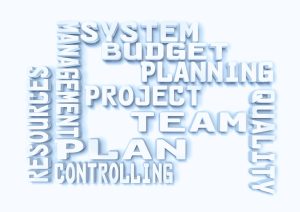
Introduction and Context Setting
Virtual Reality (VR) and Augmented Reality (AR) are rapidly emerging as transformative tools in project management, reshaping how projects are visualized, planned, tested, and executed. These technologies enable immersive, interactive experiences that traditional methods like blueprints and 2D models cannot match. VR allows for fully immersive environments where users can walk through a project before it’s built, while AR overlays digital information onto the physical world, enhancing real-world interaction with virtual data. Their growing relevance spans industries such as construction, architecture, manufacturing, and software development, where visualization and planning are critical.
The Impact on Stakeholders
All key stakeholders benefit from the integration of VR and AR including project managers, designers, clients, investors, construction teams, and end-users. For project managers, these technologies provide enhanced tools for planning, communication, and collaboration. Designers and engineers benefit from more precise visualization capabilities, enabling them to detect potential issues before construction begins. Clients and investors gain a clearer understanding of project outcomes, fostering better decision-making.
How VR and AR Transform Project Management
1. Enhanced Visualization and Planning
VR and AR allow project managers and stakeholders to visualize complex designs and layouts in 3D, offering a much clearer understanding than traditional 2D blueprints or CAD drawings. For instance, architects can walk clients through a virtual model of a building, making adjustments in real-time based on feedback. This level of interaction reduces miscommunication and aligns everyone on the project vision.
2. Improved Collaboration Across Teams
Imagine bringing remote teams together in a shared virtual space. VR can simulate real-time project environments where team members can interact with models and data as if they were in the same room. AR overlays critical project data onto physical spaces, allowing on-site workers to access up-to-date information without leaving their location.
3. Streamlining the Testing Process
VR and AR bring unprecedented value to the testing process in project management. By allowing teams to conduct virtual tests on 3D models, these technologies streamline testing in ways traditional methods cannot.
- Simulated Environments: VR creates realistic simulations of project environments, enabling teams to test functionality, usability, and performance before implementation. For example, in construction, VR can simulate different weather conditions to test the durability of materials, ensuring that structures are robust under various scenarios.
- Real-time Feedback: AR overlays testing data directly onto physical prototypes, instantly highlighting errors and discrepancies. This immediate feedback loop reduces the time spent on revisions and helps teams refine their designs quickly.
- User-Centric Testing: VR and AR enable end-users to interact with virtual models, providing valuable feedback on usability and experience. In software development, users can navigate virtual interfaces to identify bugs or inefficiencies, allowing developers to address issues before launch.
This integration reduces the need for costly physical testing and enhances the quality of project outcomes by identifying issues early.
4. Risk Mitigation and Error Reduction
By simulating project phases, VR and AR help project teams identify potential risks before execution. Engineers can test various scenarios within a virtual space, foreseeing issues that could arise during construction or development.
5. Training and Onboarding
AR and VR are invaluable for training and onboarding, allowing new team members to engage in interactive simulations of project tasks and safety protocols. This hands-on approach not only accelerates learning but also ensures that all team members are fully prepared for their roles, enhancing overall project efficiency.
6. Boosting Stakeholder Engagement
Engaging stakeholders can be challenging, especially when conveying technical details. VR and AR make complex data more accessible and understandable, enabling stakeholders to see exactly how their investments will materialize. This immersive experience builds confidence and helps secure buy-in at every project stage. For instance, firms like Gensler use VR to allow clients to experience spaces before they are built, resulting in an increase in client satisfaction and faster approval rates.
Challenges and Barriers
Despite their numerous benefits, integrating VR and AR into project management comes with challenges such as high initial costs, technology compatibility issues, resistance to change, and the need for specialized training. Smaller firms may find the investment cost-prohibitive, and there are concerns about data security and ensuring the accuracy of virtual simulations.
Mitigation Strategies
To address these barriers, organizations can adopt phased implementation strategies, starting with pilot projects to demonstrate value before scaling up. Investing in training and change management initiatives can help overcome resistance. Partnering with VR/AR vendors to ensure robust security measures are in place is also crucial.
Future Outlook and Predictions
The future of VR and AR in project management looks promising, with advancements in AI and machine learning expected to enhance these technologies further. As hardware becomes more affordable and software more intuitive, adoption rates are likely to increase across industries. Industry experts predict that VR and AR will become standard tools in project management within the next decade, with the focus shifting from adoption to optimization.
VR and AR offer significant advantages in project management, enhancing visualization, collaboration, testing, and decision-making. Despite challenges, the long-term benefits outweigh the initial barriers, making them valuable tools for future project planning and execution. The question is no longer whether VR and AR will become essential tools but how quickly your organization can harness their potential to stay ahead.









